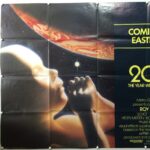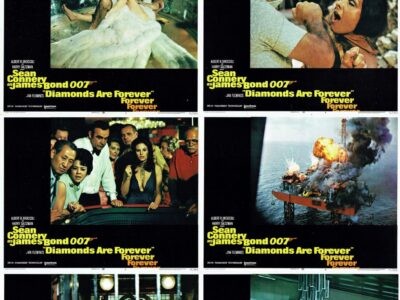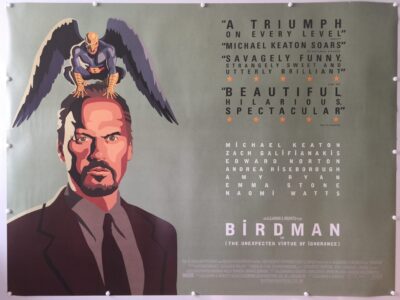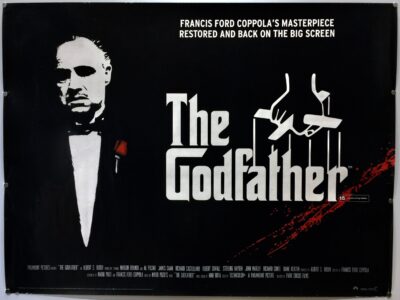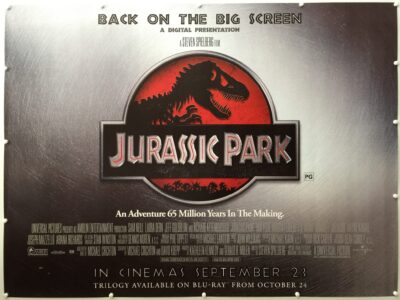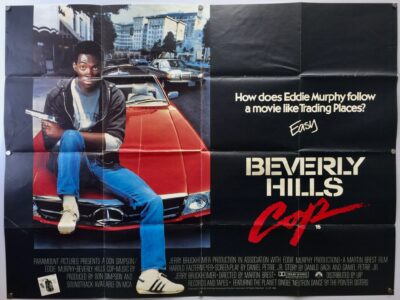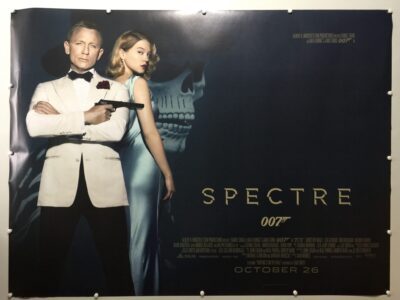2010 (also known as 2010: The Year We Make Contact) is a 1984 science fiction film written, produced, shot and directed by Peter Hyams. It is a direct sequel to Stanley Kubrick’s film 2001: A Space Odyssey, releaed in 1968 and is based on the novel 2010: Odyssey Two written by Arthur C. Clarke. The film stars Roy Scheider who replaces William Sylvester as Dr. Heywood Floyd from the original film, Helen Mirren, Bob Balaban and John Lithgow, along with Keir Dullea (as Dr. David Bowman) and Douglas Rain (as the voice of HAL 9000) from the cast of the previous film.
In this sequel the storyline follows a joint American- Soviet expedition is sent to Jupiter to discover what went wrong with the U.S.S. Discovery against a backdrop of growing global tensions. Among the mysteries the expedition must explain are the appearance of a huge black monolith in Jupiter’s orbit and the fate of H.A.L., the Discovery’s sentient computer. Based on a novel written by Arthur C. Clarke 1982 sequel novel, 2010: Odyssey Two.
Principal photography began in February 1984 with majority of the film being filmed on MGM’s soundstages in Culver City, California, with the exception of a week on location in Washington, D.C., Rancho Palos Verdes, California, and at the Very Large Array in New Mexico. Originally, Peter Hyams had intended to film the opening scene at the Arecibo Observatory in Puerto Rico, home of the world’s largest radio telescope, but after visiting in 1983, he said the site was “truly filthy” and unsuitable for filming.
When 2010: The Year We Make Contact was released it recieved generally positive reviews. On Rotten Tomatoes it holds a 66% rating with the consensus “2010 struggles to escape from the shadow of its monolithic predecessor, but offers brainy adventure in a more straightforward voyage through the cosmos”. Roger Ebert gave 2010 three out of four stars, saying, “It doesn’t match the poetry and the mystery of the original film, but it does continue the story, and it offers sound, pragmatic explanations for many of the strange and visionary things in 2001”, he added that it “has an ending that is infuriating, not only in its simplicity, but in its inadequacy to fulfill the sense of anticipation, the sense of wonder we felt at the end of 2001”. However, he concluded “And yet the truth must be told: This is a good movie. Once we’ve drawn our lines, once we’ve made it absolutely clear that 2001 continues to stand absolutely alone as one of the greatest movies ever made, once we have freed 2010 of the comparisons with Kubrick’s masterpiece, what we are left with is a good-looking, sharp-edged, entertaining, exciting space opera”.
2010: The Year We Make Contact reach number two at the North American box office during its debut week and took $7,393,361 for its opening weekend. It was held off from the top spot by Beverly Hills Cop, which became that year’s highest-grossing film in North America. During its second week, the film faced competition from two other new sci-fi films; John Carpenter’s Starman and David Lynch’s Dune, but ultimately outgrossed both by the end of its domestic theatrical run. It finished with just over $40 million at the domestic box office and was the 17th highest-grossing film in North America to be released in 1984. In 1984, Marvel Comics published a 48-page comic book adaptation of the film by writer J. M. DeMatteis and artists Joe Barney, Larry Hama and Tom Palmer which was published both as a single volume in Marvel Super Special #37 and as a two-issue miniseries.
2010: The Year We Make Contact was nominated for five Academy Awards; Best Art Direction, Best Makeup, Best Visual Effects, Best Costume Design and Best Sound.

Film Details
Title
2010: The Year We Make Contact
Year of Film
1984
Director
Peter Hyams
Starring
Roy Scheider, John Lithgow, Helen Mirren, Bob Balaban, Keir Dullea
Origin of Film
USA
Genre(s) of Film
Adventure | Mystery | Sci-Fi | Thriller
Box Office
Budget: $28,000,000 (Estimated)
Opening Weekend: $7,393,361 (USA) (11 July 2012)
Gross: $40,200,000 (USA)
If you liked the website, found it useful and would like to help with its continued ad-free development, you can make a donation via PayPal. Small or large, it doesn’t matter, every little helps! We thank you for your continued support.

